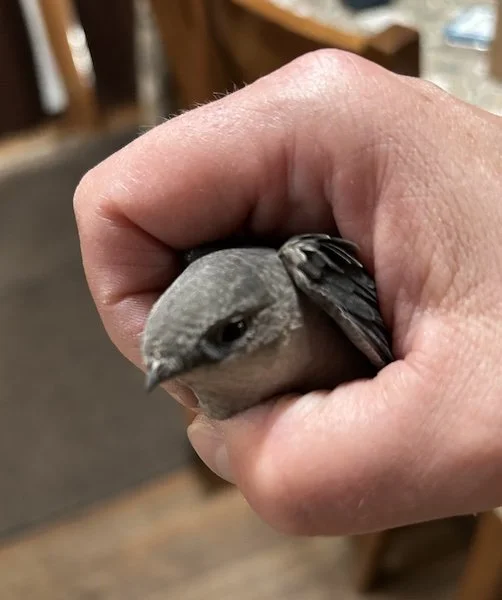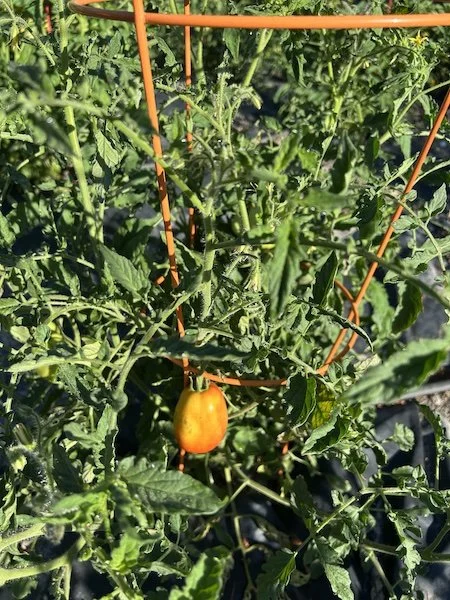Baby Birds, Tomatoes, and Fitting Conundrums
The husband and I are aware that the animals are in charge and we’re just renting space in their forest. I came down from the sewing room to make dinner yesterday afternoon and heard cheeping coming from the fireplace. We have swifts nesting in the chimney and a little bird had fallen down. It was clinging to the screen inside the door. I carefully removed it and texted Sarah, who knows far more about birds than I do.
Sarah said it looked big enough to fledge and that I should take it outside and see if the adults came for it or if it would try to fly. (I see the adults circling the chimney every day.) I did just that and it immediately flew off. Perhaps it was trying to fly out of the chimney and went down instead of up.
We need to put a screen on that chimney opening, but it’s 40' up and to get to the top requires the use of the forklift. It’s not something we remember to do until a bird shows up in the fireplace. And we have to wait until nesting season is over.
******
I have some ripening Oregon Star tomatoes:
These plants always look so sickly. Their leaves are thin and curled. After over a decade of growing them, though—and seeing them look the same every year—I have accepted that they will not win any beauty awards. They produce heavily and that’s what I want. All the other tomato plants look lush and beautiful. I harvested my first cucumber the other day, too.
******
I’ve spent a lot of time over the past two days messing around with darts. The muslin for the Amarena dress has some faint drag lines running diagonally from underneath the bust to the side seam, and while I doubt anyone else would find them noticeable, I want to eliminate them if I can before I cut into the good fabric.
I checked my fitting books. The Jan Minott book says those drag lines mean there is more length in the front than the back. The Sarah Veblen book says the darts need to be adjusted. The consensus of the Sewing Pattern Review online forum on that topic was that the dart intake—the amount of fabric folded up into the dart—needs to be increased. Indeed, I could pull those drag lines out and make them disappear by pinching the fabric up with my fingers, and the dress hangs perfectly when I do that.
I experimented with splitting the existing dart into two slightly larger darts. Eh. I’d probably like that better if I could refine the angles of the darts. I tried increasing the dart intake. All that accomplished was to make the cups too large. The darts on my existing woven tee bodice are perfect for me, which I confirmed by putting on each of those tops and looking at how they fit. I have been wearing those tops a lot because they fit so well. I don’t think the issue is the darts.
I am learning (slowly) that when the proposed solution to a fitting problem doesn’t fix the problem, the problem actually may lie somewhere else. (Reason #397 for why people hate fitting patterns.) After making a couple of bodice muslins with suggested fixes—using old sheets from the thrift store—and not getting satisfactory results, I am beginning to think the issue is somewhere in the side seam. Perhaps, in the process of frankenpatterning my woven tee bodice with the Amarena dress, the side seams got out of whack.
I am going to run up another muslin of the Amarena dress to test this theory. The first muslin has been hacked up too much to be useful.


